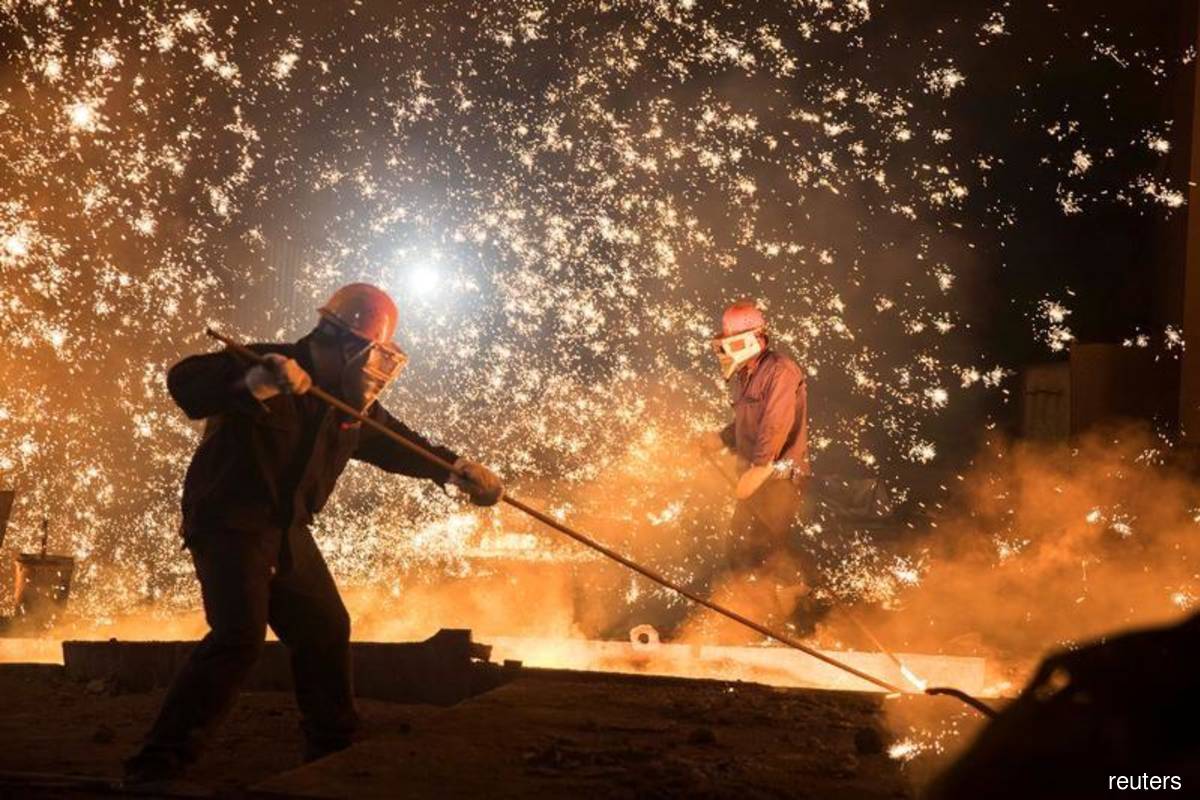Too early to assess impact of MIT’s newly developed material on local steel players — analysts

KUALA LUMPUR (Feb 15): It is too early to assess the impact of the new material developed by the Massachusetts Institute of Technology (MIT), described as "stronger than steel but as light as plastic", on local steel makers.
A team of chemical engineers at MIT said they had recently developed a new material that can be easily produced in large quantities.
It is a two-dimensional polymer that self-assembles into sheets, unlike all other polymers that form one-dimensional, spaghetti-like chains.
The researchers found that the new material's elastic modulus — a measure of how much force is required to deform a material — is four to six times higher than that of bulletproof glass. They also found that the yield strength, or the force needed to break the material, is twice that of steel — even though the material is only about one-sixth the density of steel.
Although it is a breakthrough discovery, UOB Kay Hian Securities (M) Sdn Bhd said this development is still in its infancy, and might take a while before this new material can be mass-produced and used commercially.
“Historically, for new research and innovation to be commercialised and gain significant market shares across the globe, it takes at least 50 to 100 years.
“I believe that even if this new material were to be rolled out into the market, it will not be able to completely replace steel as a whole, especially as building materials in the construction industry. It may instead find its usage more relevant for other things like protective coating of phones or car parts,” said UOB analyst Noor Hazmy Noor Hazin in an email response to The Edge.
According to him, there have been attempts to find substitutes for steel, such as aluminium, wood, stone, concrete and et cetera, but steel still remains relevant all these years.
“Steel still remains relevant throughout these years as industries like construction still prefer to use it as one of the main building materials due to its own unique properties — its strength and elongation, being malleable, non-flammable and recyclable, et cetera.
"In addition, steel also has gone through [on top of ongoing research] various new product innovations and improvements in the steel-making process to make it a much better product, of low cost and also being environmentally-friendly at the same time.
“Steel is a multi-trillion-dollar industry that has been around for more than 100 years. It is deeply rooted in so many industries (construction, engineering and et cetera) across various supply chains (iron ore, coal, scrap and others) globally. Hence, I believe it is not economically-viable for steel to be completely replaced, at least not in the near future,” said Hazmy.
Meanwhile, TA Investment Management Bhd chief investment officer Choo Swee Kee told The Edge there will be an impact on steel demand if the new material developed by MIT proves superior.
"However, as with any new material or product, it will take time to become widely accepted. There are many other considerations when introducing new materials, such as the cost, ease of use, resistance to heat, sunlight and UV radiation, rain, et cetera,” said Choo.
Challenging outlook for steel, but demand likely to rise in 2022
UOB's Hazmy expects local steel makers to still be profitable in 2022, but with lower margins as average selling prices fall, freight costs rise and raw material prices increase.
In Malaysia, Hazmy said, local demand is slowly recovering as construction activity picks up with the relaxation of the movement control order, but remains weak without any major pump-priming activities from the government.
“While the oversupply situation for the local steel market persists, I believe some steel companies will continue to export their products abroad to capture rising demand in the regional market. As China aggressively curbs its own steel production in achieving carbon neutrality by 2060, it will need to increase its import of steels to cater for the country’s economic growth given that China is the biggest producer and consumer of steel globally. Ultimately, this may benefit steel players in Asia, including Malaysia.
“However, I believe global steel prices may have peaked given China’s plan to limit its commodity prices on the back of its carbon neutrality agenda. As such, I expect local prices to be trending downwards gradually going forward but still remain strong (higher than the historical range of around RM2,300/mt) as demand is picking up locally and regionally,” said Hazmy.
The analyst said UOB had a "hold" call for both Ann Joo Resources Bhd and Choo Bee Metal Industries Bhd.
“They are currently trading close to our target prices of RM2.01 and RM2.05 [respectively] (five to six times 2022 price-earnings, close to the historical mean). Our local steel bar price assumption for 2022 is RM2,700/mt,” he explained.
TA’s Choo added that he is positive about the outlook for steel this year despite a significant backlog of infrastructure projects delayed due to the Covid-19 pandemic.
“Steel demand will likely rise when these projects resume or kick off. Some major economies like the US and India are also boosting their infrastructure spending to boost their domestic economies post Covid-19,” said Choo.
Read also:
MIT scientists develop material stronger than steel but light as plastic
The content is a snapshot from Publisher. Refer to the original content for accurate info. Contact us for any changes.
Related Stocks
Comments